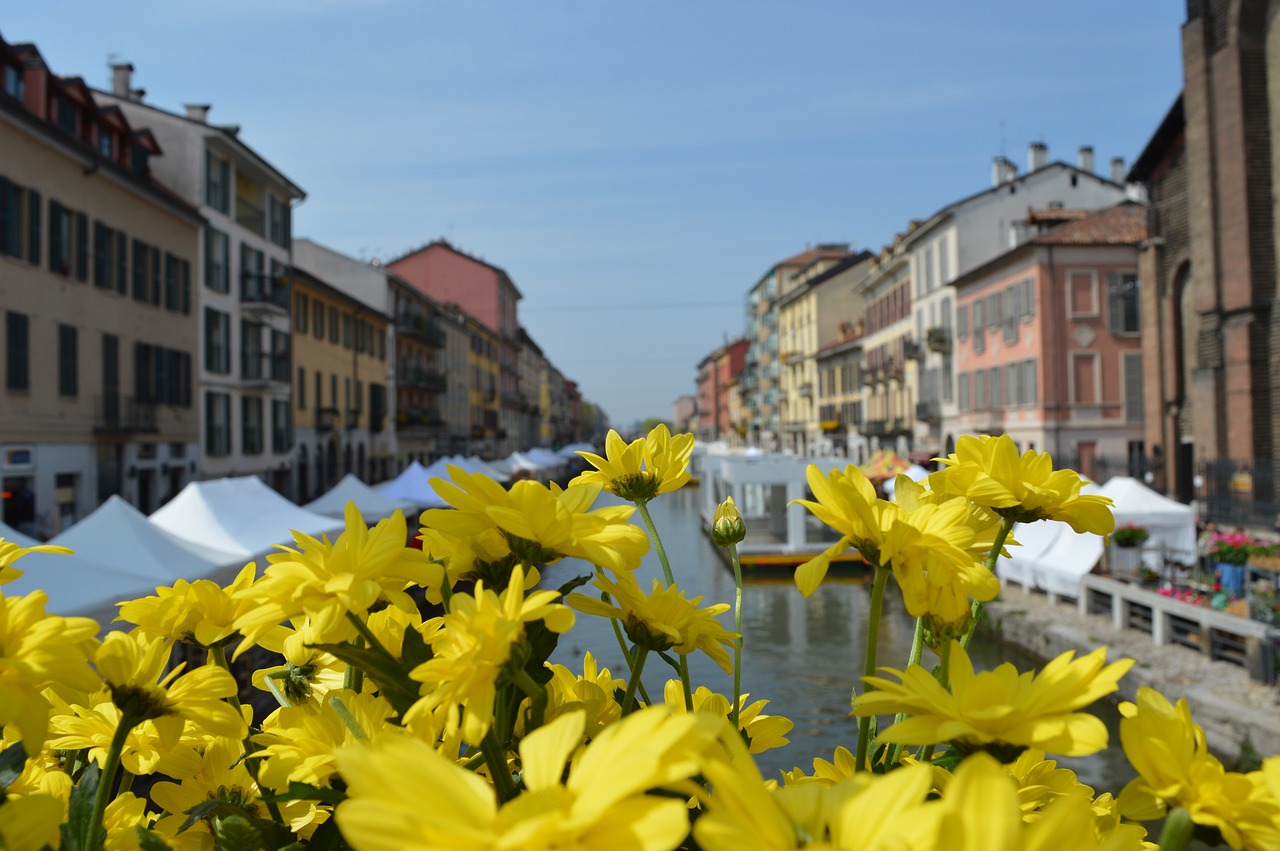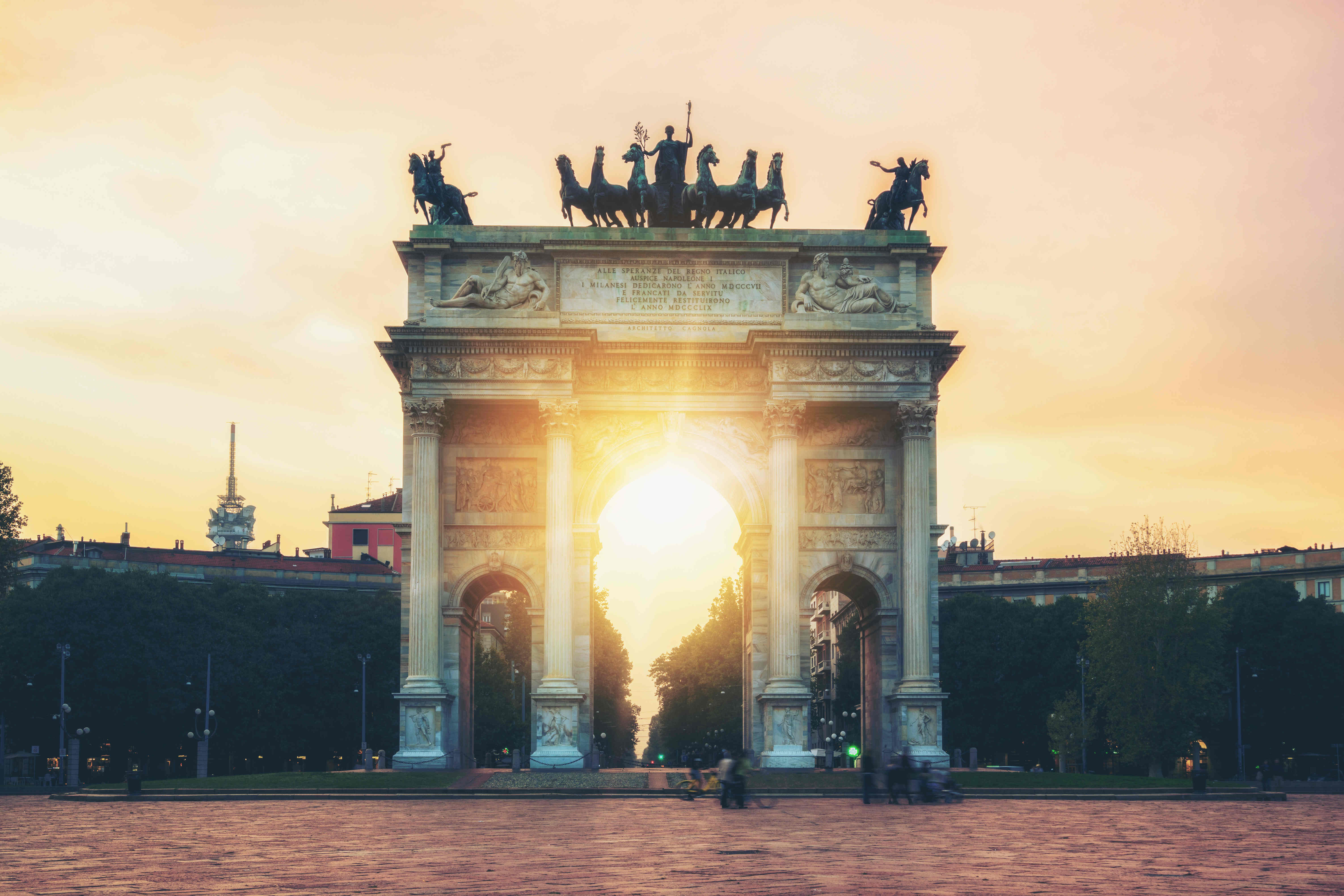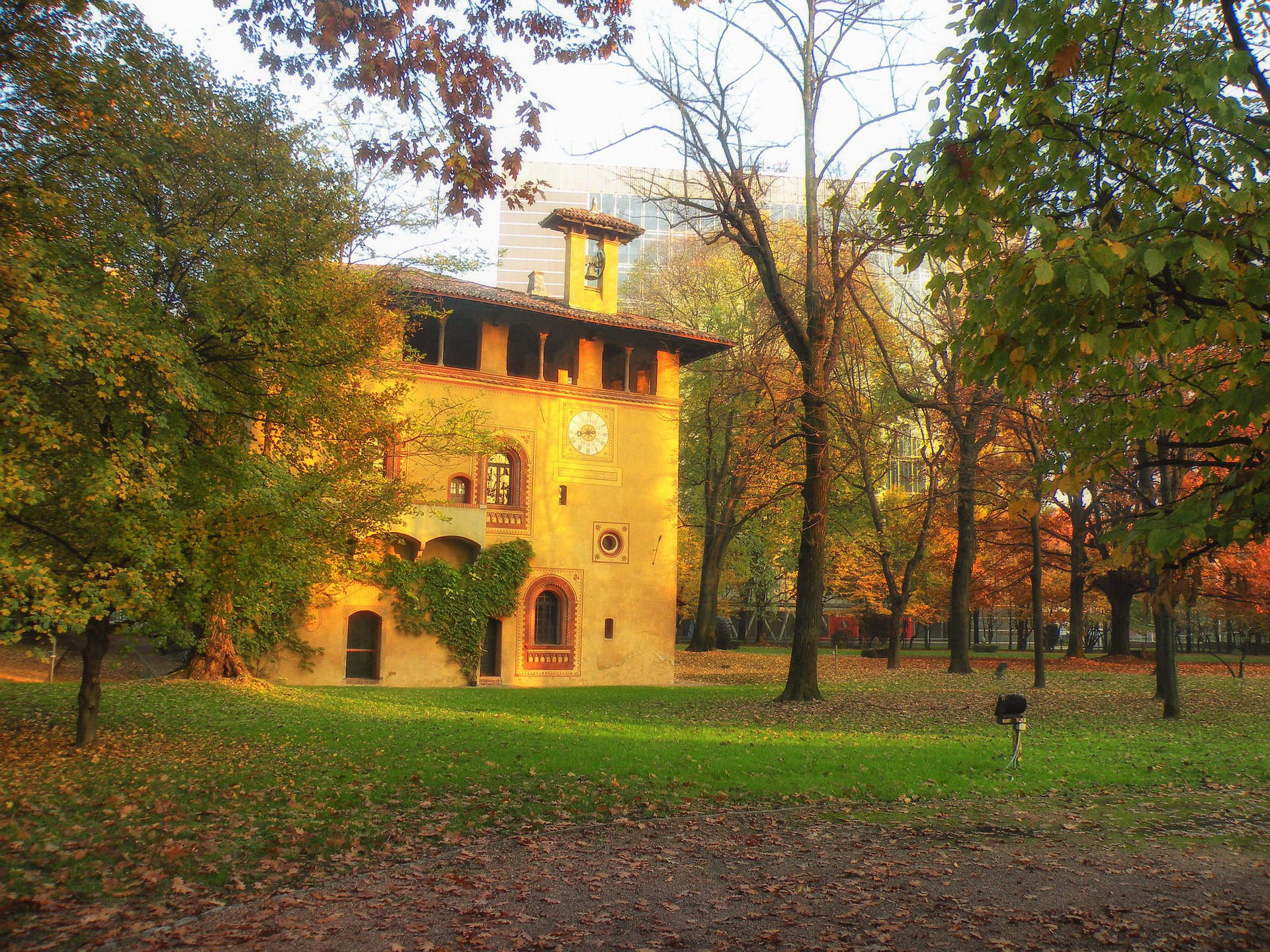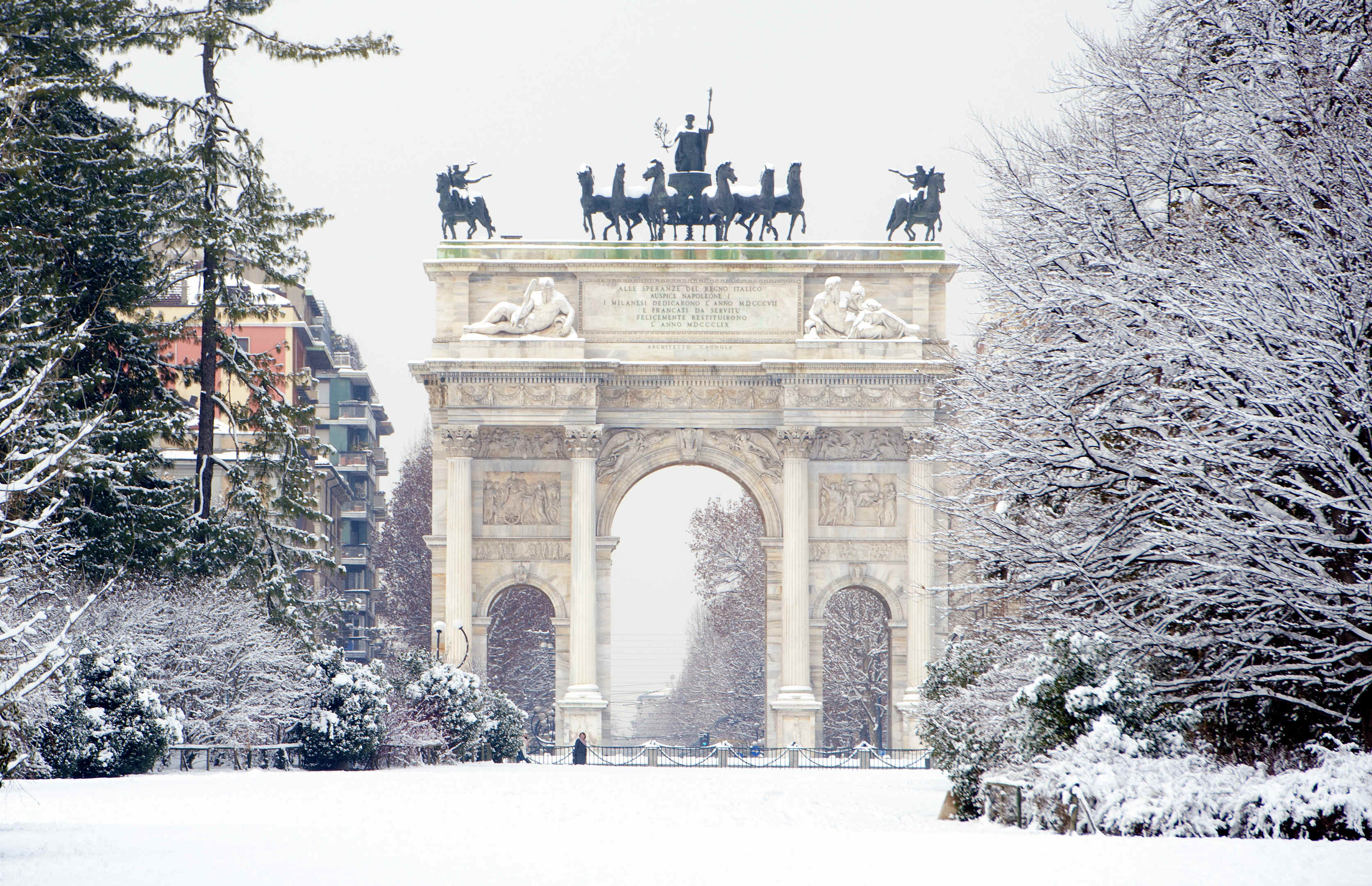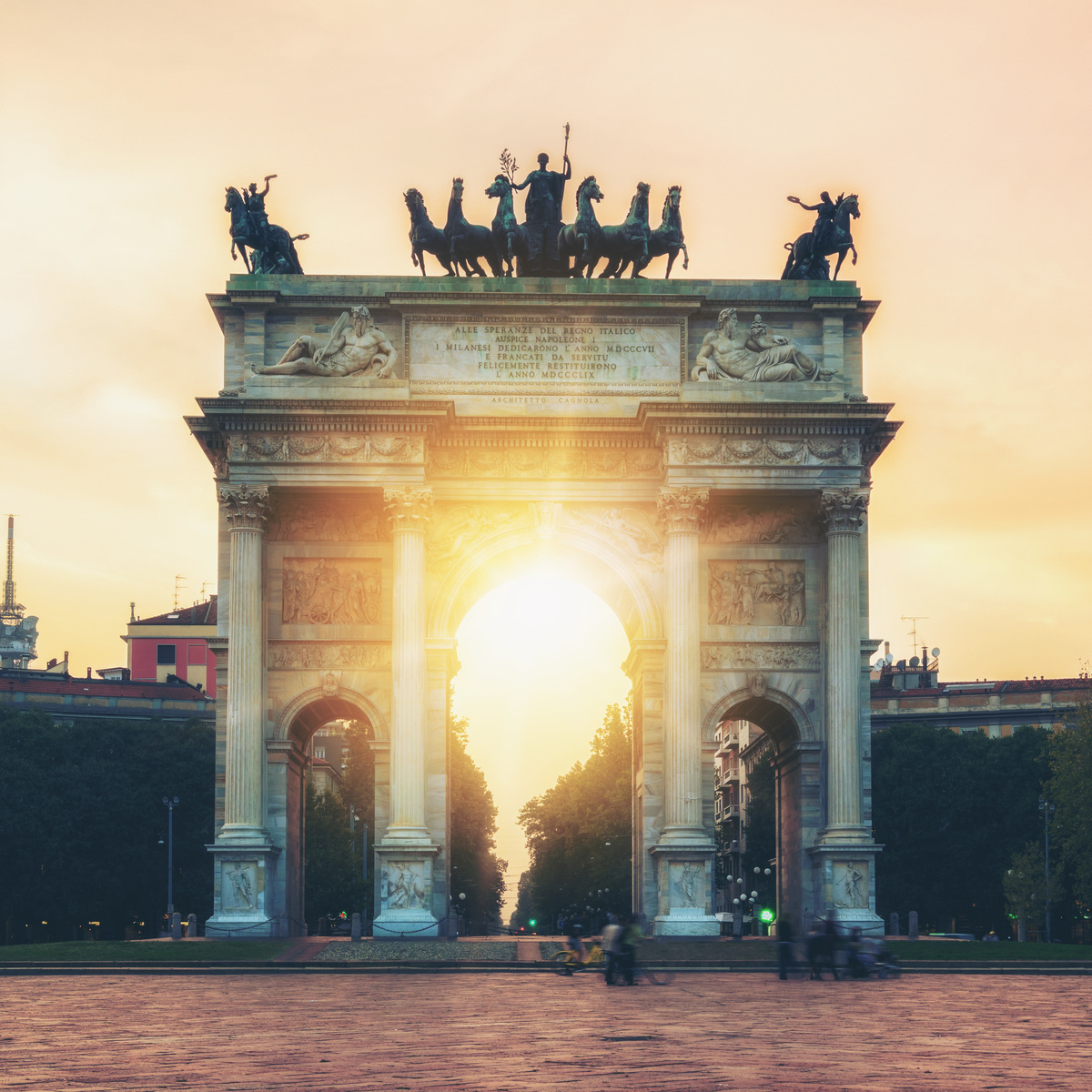
The Best Time to Visit Milan
Milan is not just any Italian town. You can’t quite put your finger on it, but it feels, and certainly looks different. Italy’s Second City is a rich, busy industrial town in the north of the boot, and as such runs on a faster clock than the rest of this usually laidback, no worries kind of country.
Rome may have all the easily accessible history of the greatest empire ever to be, but Milan is the center of Italy in terms of commerce, design, fashion, entertainment, finance, media, and contemporary art.
It is certainly true that the fastest growing, third-largest economy in Europe, as a rule, doesn’t much concern itself with a whole lot of frivolity or picturesque beauty in terms of cityscape – it is quite a bit less romantic than other towns around the country. However, a rule wouldn’t be a rule without an exception, of course, and the one, in this case, stands tall and gleaming in the main square of town in the form of the Duomo di Milan, the church with the largest stained-glass windows in all of Christianity.
Generally, this town is not mentioned on lists of the most beautiful cities in Italy. Still, Milan is set apart from the rest of Italy, and the world, by one thing: the style of its people. Milan shares the title of Fashion Capital of the World with Paris, though the Milanesi would never admit to this and see the hierarchy progress downward from their hometown – it is la citta della moda first and foremost, and the rest is noise.
The second most populous city in the nation comes after none in the hearts of its residents: Milan is where it’s at. France may have Dior and Chanel, but Italy has Armani, Gucci, Fendi, Versace, Prada, Dolce and Gabbana – and that’s stopping it short for the sake of brevity. From the finest silks to the most cutting-edge cuts, there is really no contest: this place is the capital of dressing well. It is thus recommended that on your next trip to Milan, you leave at home all items of clothing more functional than decorative. This includes, but is not limited to, sandals worn with socks, baseball caps, fanny packs, cargo shorts, and anything else that is suspiciously comfortable.
All this may make it sound like Milan is a snooty city. However, don’t forget that you’re still in Italy – the friendliest, sunniest, and most carefree nation on this earth. Milan may be all that, but it’s certainly no elitist luncheon. So come down here not just for the fashion – there’s plenty of history, culture and art to be seen, along with a truly amazing variation on a familiar theme in terms of food and the best aperitivo anywhere in Italy, bar none, which really means best aperitivo in the world. The singular joy in the life of any urbanite Italian, aperitivo is a ritual wherein the price of one drink after work includes unlimited access to a buffet of scrumptious snacks and first courses of all kinds. There is no argument, you must agree, that this is one of the best arrangements humanity, on the whole, has come up with.
Plus, there is no garment as beautiful as the sight of Da Vinci’s Last Supper on the wall of the convent of Santa Maria delle Grazie. It is much, much paler than you picture it to be, more fragile than the pictures make it seem, but that is perhaps part of what renders it so wholly unforgettable. Just like Milan.
So the question isn’t whether you should come to visit, but when to do so. Let us help you:
Spring
Now, you might think that fashion week is the biggest event in the Milanese year. Well, you’re in for a surprise: welcome to the Salone del Mobile. Literally meaning furniture fair, this is the largest trade fair of this kind in the entire world. Make no mistake; this is no simple showing of ready-made kitchens: however much excitement fashion week generates, it is merely a prelude, an antipasto, to the Salone del Mobile. The city just goes nuts over it.
For the duration of the fair in April, you can’t turn your head without running into an event, exhibit, show or party relating somehow to the humble excuse of furniture or design. So you don’t really need an interest in cabinets and couches to join in the fun.
The rest of spring is a wonderful time to visit Milan at great prices, especially immediately before or after the Salone. May, for instance, is the ideal month to come here and discover the Navigli district. These canals were once a working-class neighborhood populated by dock workers, but now are home to an ever-increasing number of bars, restaurants, and events all year round, with balmy late spring evenings being the best time to check them out.
You’ve got the Fiera di Sinigaglia, for instance, every Saturday. This is a proper flea market in the classic sense of the word, i.e., not an overly commercial fleece fest disguised as a bargain bazaar. Plus, this one has been around since the 1800’s, which is a great plus for a backstory to any item bought there. Come here to eat local street food or look through the stalls for a hidden treasure to take home.
If you are more the type to go antiquing, you can do that on the last Sunday of every month (except August, of course) at the Mercatone dell’Antiquariato.
Spring is a joy for flower fans, too, with two events on the theme of all things flora. The Fiori e Sapori festival and the Orticola, both of which are fairs where you can see rare flower types like the elusive iris pallida, the root of which is often used in Italian products of all sorts; or just have some food, drink, and listen to live music surrounded by the very best of nature. Leave it to the Italians to do even flowers in fashion.
Take all this and the fact that spring means people flock to the terraces of bars, cafes, and restaurant to liven up the city with the animated chatter of merry Italians, and tell us you’re not in the mood to visit.
Summer
Let’s say you wanted to enjoy the buzz of fashion week without the crowds or prices: come down in June for this most stylish of events. The only real difference besides the more manageable rates and slightly thinner crowds is the fact that those skinny, bored, and gorgeous models strutting their stuff around town will be male. Who’s complaining?
One piece of bad news is that that’s pretty much it for the summer, since August is a horrible time to come, even more so in Milan than elsewhere in Italy. The fact that the city is not quite as touristic as Rome, for instance, means that it becomes a complete ghost town in August, especially after Ferragosto or Aug. 15 when even the last of the last leave town for nearby beach spots.
Expect even supermarkets to shut and tumbleweeds to roll idly to and fro.
The Teatro alla Scala puts on shows in August, but even those can’t save this month from being the absolute worst time to come to town. Things will be at their cheapest; it goes without saying.
Fall
And now, ladies and gentlemen, for the main event: September means Milan Fashion Week, and the season leaves not much time or thought for anything else. The most important week in the world of fashion is the one in the very end of September, which means that the jet-set of the fashion conscious descend upon Milan and make it home for a week – nothing but Vogue, catwalks, and backstage gossip wherever you turn. It is no exaggeration to say that during this week, every second person you see is “someone.”
Yes, prices skyrocket. There’s a good reason for that. The feverish excitement that goes into this event filled with glitz and glamour is infectious, and you will find yourself leafing through Italian Vogue with a critical eye as you have your obligatory cappuccino and cornetto in the morning.
Late fall is a great time for shopping and sales abound, as the spring collection is on its way out, but winter hasn’t set in yet. Prowl the Milanese high street, corso Buenos Aires, or get your high fashion fix at the famous via Montenapoleone – but be warned that bargains are nonexistent while you (window) shop on this world-famous street filled from end to end with high fashion flagship stores.
Winter
Here’s one for the kids. In November, you can take them to G! come Giocare, which means P as in Playing, and is a massive fair centered around that single point of focus of every child and some adults, too: the toy.
Forty thousand people, small and big, visit this fair and fill their hearts with joy for a day. There’s more to do here than trying to dissuade your kids from wanting everything – they are kept occupied with shows, screenings, games, competitions, and other activities so that you can take a breather, too.
December means that Befana, the pre-Christmas witch, makes her way to town to arrive on the eve of the fifth bringing gifts or chastisement to cute little Italian children as a start to the holiday season.
Christmas time in Milan is a wonderful, lavish affair with lights and incredibly well-put together decor. The decoration of the enormous Christmas tree in Piazza del Duomo, for instance, is sponsored each year by a famous jewelry brand – past years have seen Swarovski and Pandora on the job.
The Galleria Vittorio Emanuele – Italy’s oldest shopping mall - and corso San Babila shine in their very best light as well, and since all three are connected to one another, you can make a mulled-wine powered evening walk of it.
December is a lovely time to see some art, as well, particularly the Christmas collection at the Palazzo Marino, which exhibits special pieces this time of year. You can see the Last Supper at the most opportune time of all – if you remember to book ahead.
After this short foray into things other than fancy dress, let us get right back to it: both Men’s Fashion Week in January and Women’s in February are huge events, and the often freezing winters in Milan put no damper on the occasion or the outfits. One date taken more seriously in Milan than you might expect is the day of lovers. Come to town during Valentine’s day, where many restaurants and bars have special offers for couples, and the other lovebirds in town pull out all the stops to look even better than usual if that is possible at all. So treat your partner for a night out on the town for San Valentino.
Milan may not be the most beautiful city or top the list for the most romantic, but it certainly knows how to look good or fare la bella figura, which is more than half the battle, according to the residents of the capital of fashion.
